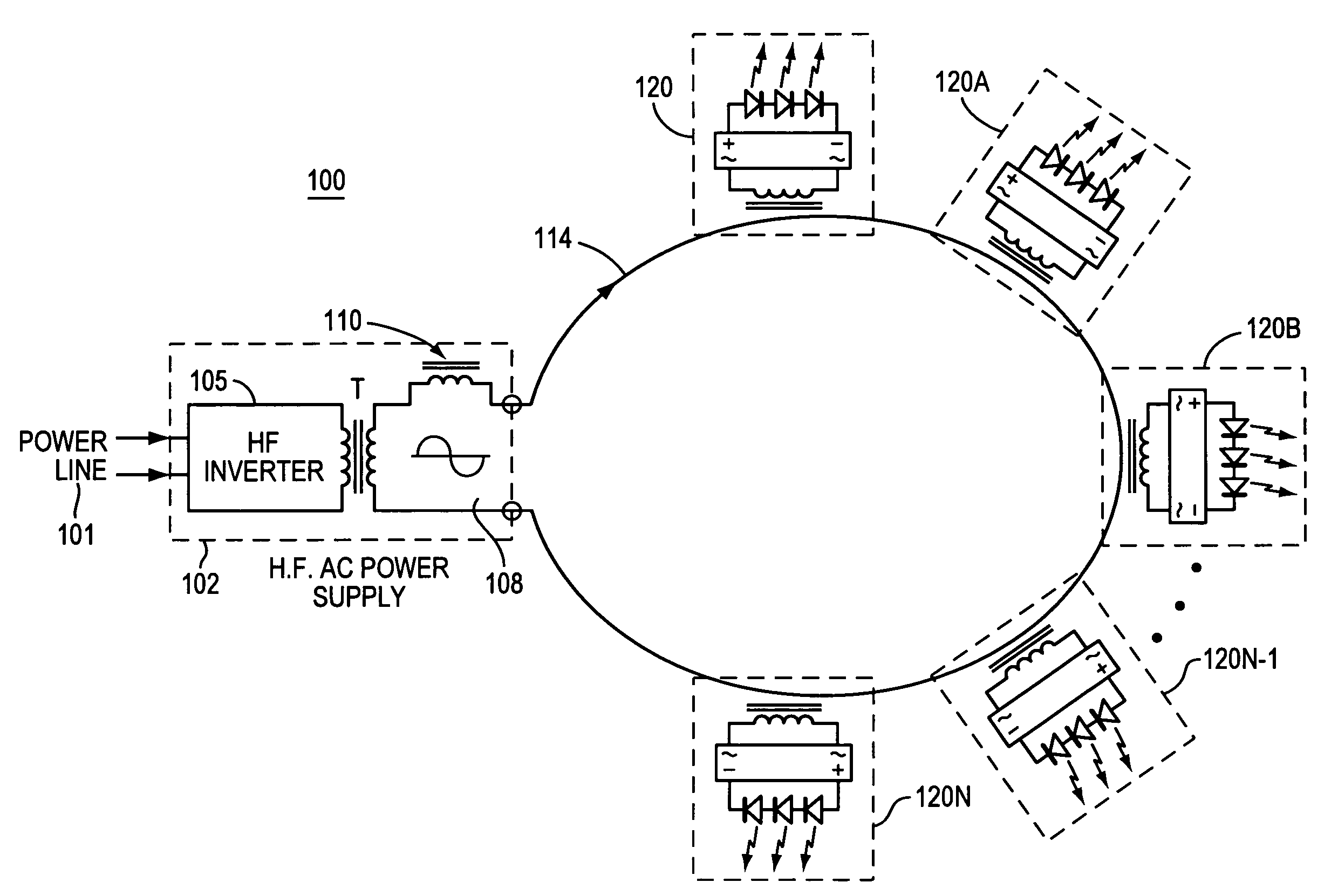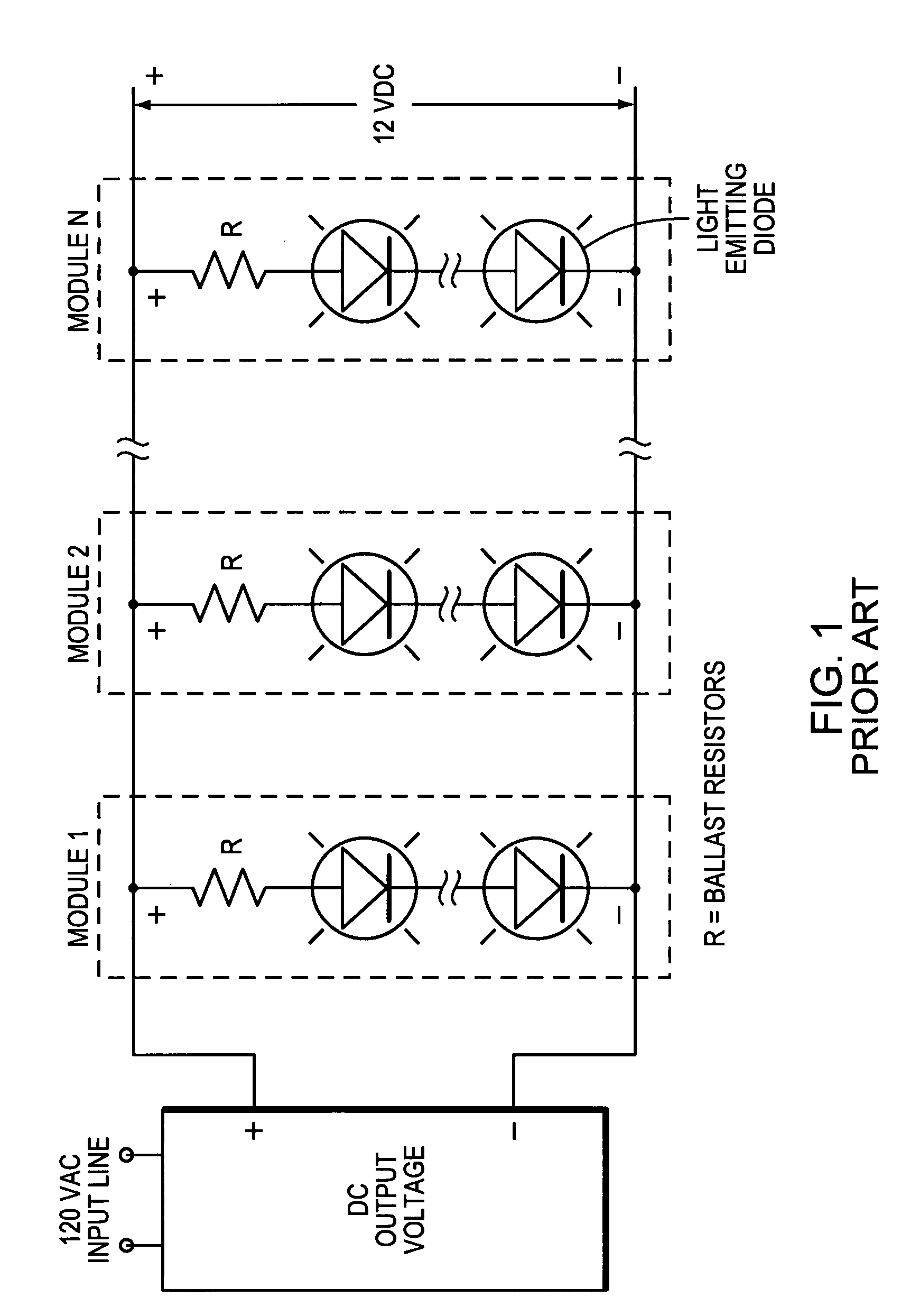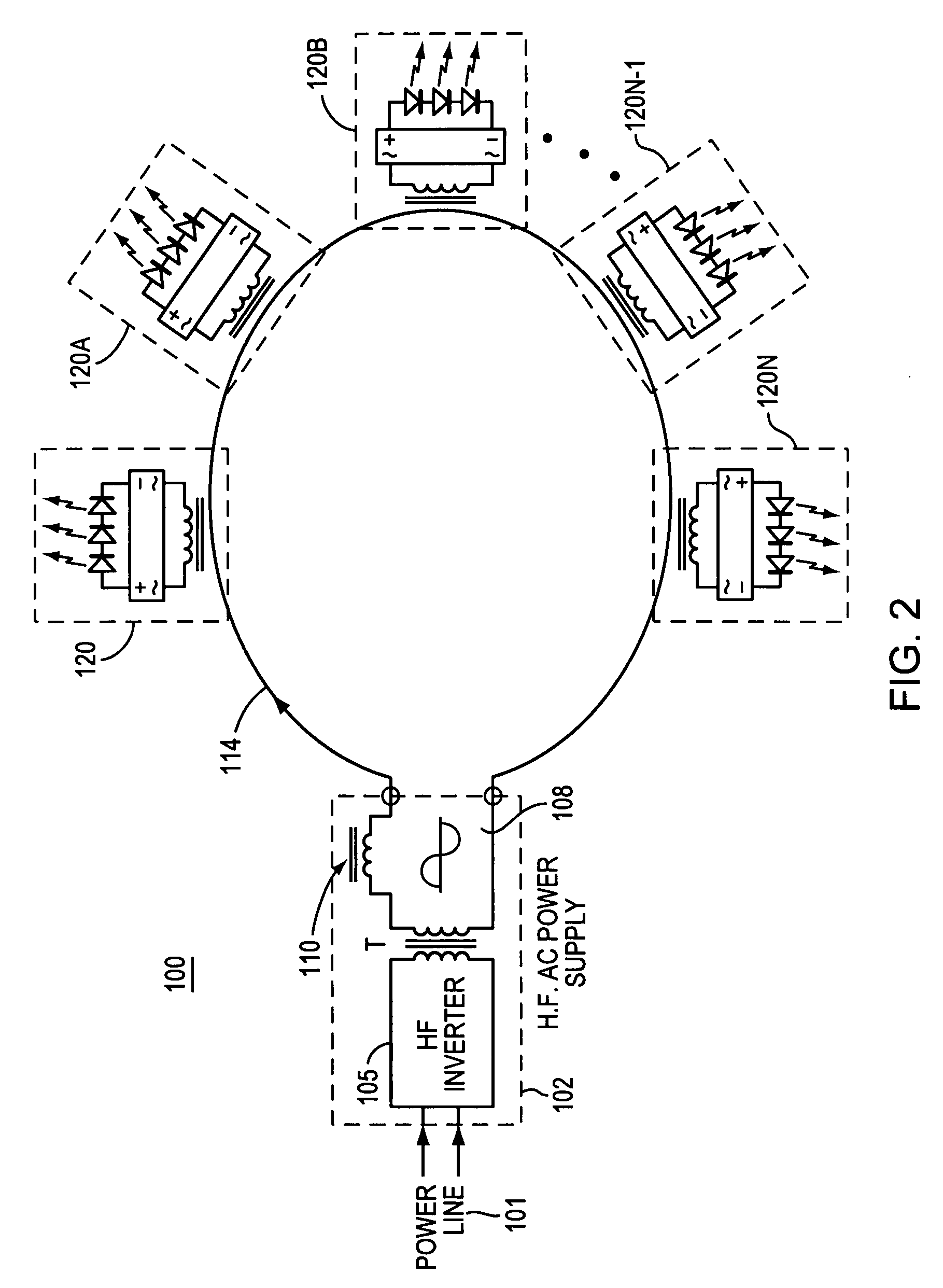Illumination systems
a technology of illumination system and fluorescent light tube, which is applied in the direction of continuous variable inductance/transformer, electric variable regulation, inductance, etc., can solve the problems of consuming a relatively large amount of electrical power, fluorescent light source a relatively short life of approximately 20,000 hours, and fluorescent light source is usually quite fragile, so as to improve reliability, reduce cost, and improve efficiency
- Summary
- Abstract
- Description
- Claims
- Application Information
AI Technical Summary
Benefits of technology
Problems solved by technology
Method used
Image
Examples
Embodiment Construction
[0042]FIG. 2 illustrates an illumination system 100 suitable for general lighting and illumination of commercial signs. Illumination system 100 includes a high frequency power supply 102 powered by a power line 101 (for example, 110V and 50 Hz or 220 V and 60 Hz). High frequency power supply 102 includes a high frequency (HF) inverter 105 and a current source 108 including a current limiter 110. HF inverter 105 provides a sinusoidal signal of a frequency in the range of 5 kHz to 100 kHz, and preferably in the range of 20 kHz to 40 kHz to transformer T. The output from illumination system 100 is provided to a primary current loop 114. Several illumination modules 120, 120A, 120B . . . 120N are coupled to illumination system 100 using current loop 114. Each illumination module 120 includes an electromagnetic coupling element (shown in detail in FIG. 4B and also shown in FIGS. 2, 2A and 4A) and several light sources that are preferably light emitting diodes (LEDs). In general, the ligh...
PUM
 Login to View More
Login to View More Abstract
Description
Claims
Application Information
 Login to View More
Login to View More - R&D
- Intellectual Property
- Life Sciences
- Materials
- Tech Scout
- Unparalleled Data Quality
- Higher Quality Content
- 60% Fewer Hallucinations
Browse by: Latest US Patents, China's latest patents, Technical Efficacy Thesaurus, Application Domain, Technology Topic, Popular Technical Reports.
© 2025 PatSnap. All rights reserved.Legal|Privacy policy|Modern Slavery Act Transparency Statement|Sitemap|About US| Contact US: help@patsnap.com



